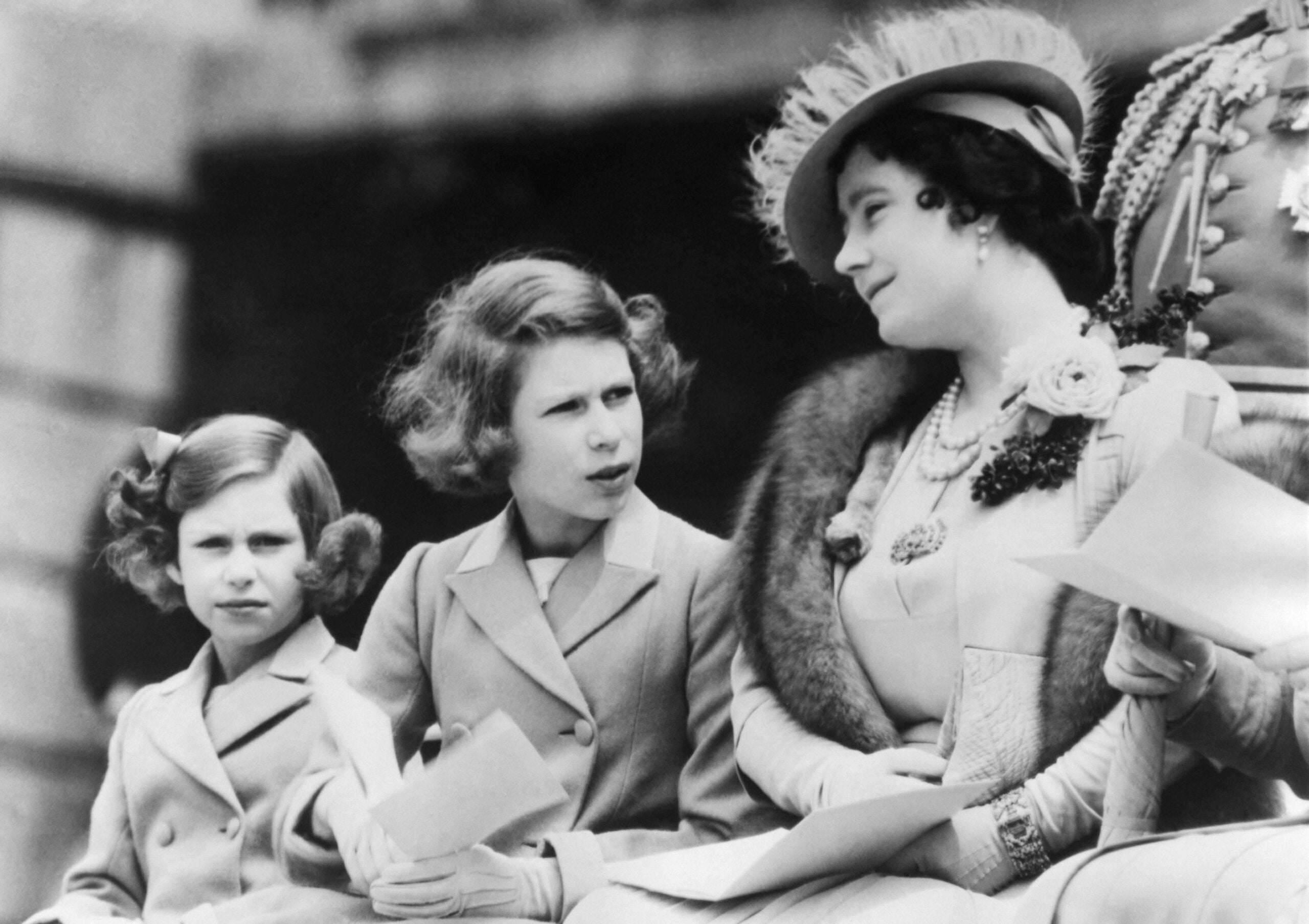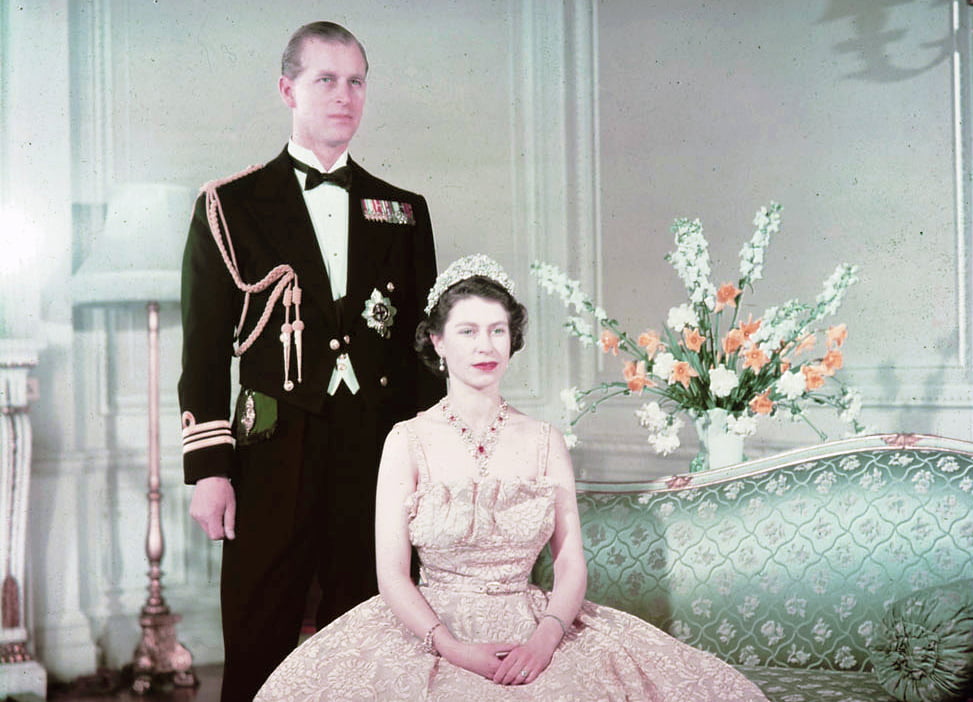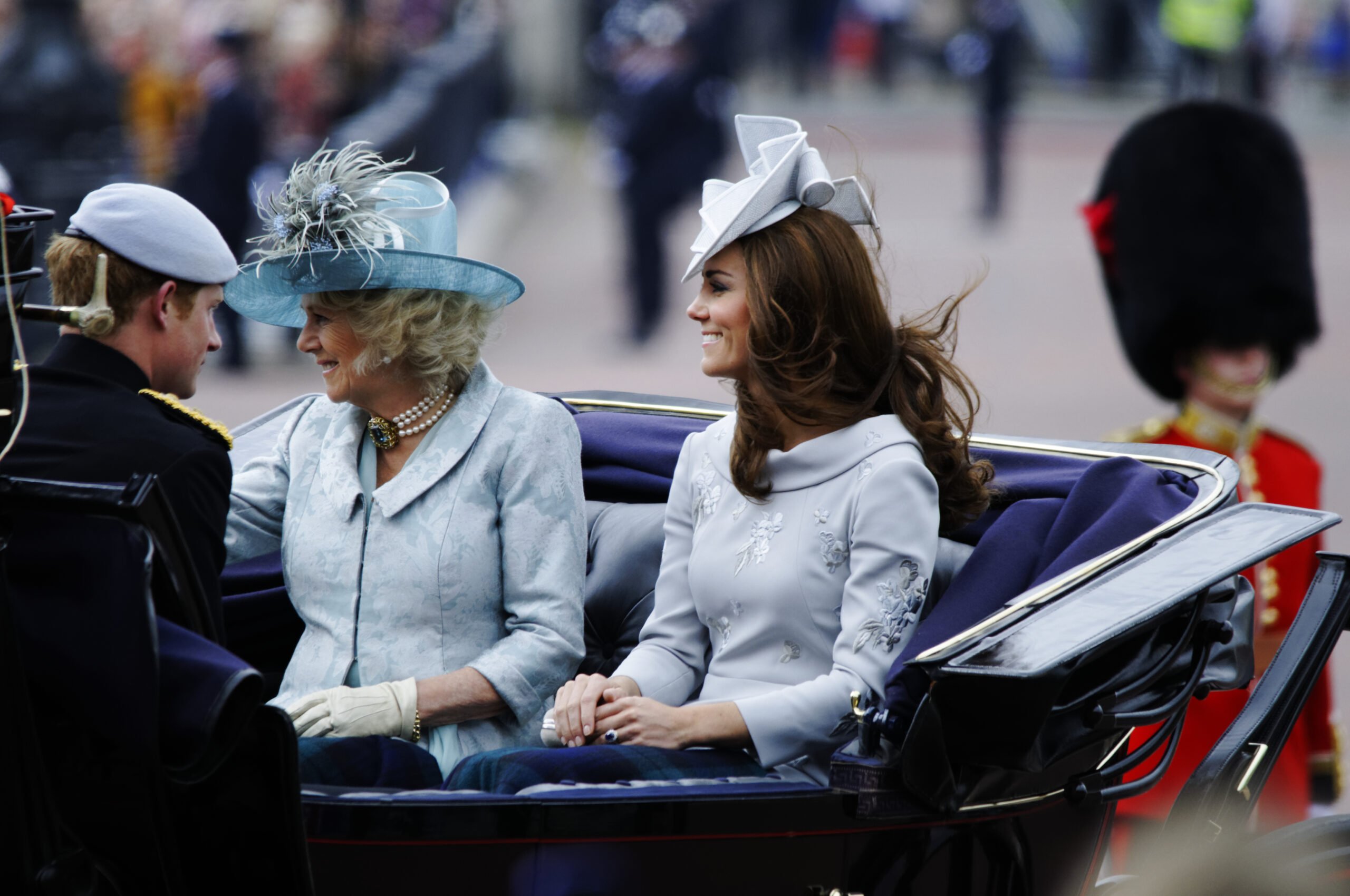
Joined by a sister, Margaret Rose, in 1930, the young Elizabeth enjoyed a close relationship with her family, always referred to by her father, George VI, as “us four”. Her father, whose own upbringing had been austere and regimented, was anxious to create a warm and loving home for his daughters. The princesses were home-educated under the supervision of a governess and their mother who, in spite of her many duties, made time to provide guidance, religious and otherwise, for her daughters.
Elizabeth’s cousin Margaret Rhodes described her as “a jolly little girl, but fundamentally sensible and well-behaved”. These character traits were to stand her in good stead when fate made her father King and herself heir to the throne, aged just ten. Both parents sought to prepare Elizabeth for her future role, extending her educational syllabus, and ensuring she met many influential people.
During the Second World War Queen Elizabeth declared, on being asked to leave London: “The children won’t go without me. I won’t leave the King. And the King will never leave.” George VI, who had worked hard to overcome his stutter and become the wartime voice of the nation, emerged as a popular national figurehead. He was extremely protective of his elder daughter, resisting her requests to join the armed forces until 1945. His premature death, at the age of just 57 in 1952, was a terrible blow for all his family, and thrust a stoical, but grieving, Elizabeth onto the world stage.
The Queen Mother continued to inspire her eldest daughter by serving her country assiduously and long, remaining involved in public life into very old age. When she passed away, peacefully in her sleep at the Royal Lodge at Windsor at the age of 101, the Queen was at her bedside.
Always less conventional and serious than her sibling – both by nature and also because of the lesser responsibilities that awaited her – Margaret was nonetheless deeply loyal to Elizabeth, and missed her sorely when she married, when Margaret was aged 17. However, Margaret was far from inactive when it came to royal duties: she undertook her first solo public engagement aged just 15, when she opened a Save the Children play centre in London, and had 50 engagements in her ‘coming out’ year, when she was 18.
Despite their loving relationship, the more sensible older sister sometimes had issues with her sister’s free-spiritedness, mostly famously when Margaret informed her, as Elizabeth prepared for her coronation, that she wished to marry Peter Townsend, a divorced commoner. Elizabeth, naturally sympathetic to her sister and also – like the Queen Mother – fond of Townsend, a long-standing family friend who had been close to the late King, initially asked Margaret to wait a year. But ulimately the Queen was constrained to follow the advice of the prime minister, Winston Churchill, and the Archbishop of Canterbury, who were both adamant such a union could not go ahead.
After her subsequent marriage to photographer Antony Armstrong-Jones ended in divorce, Margaret spent the rest of her life in an apartment in Kensington Palace and never re-married, but instead spent a great deal of time with the Queen and Queen Mother. When she died aged 71 in 2002, after a period marred by ill health, it was her mother and sister who were the most badly affected.
The former Cabinet minister Lord St. John of Fawsley, a long-time friend of Margaret, commented: “I never in all my life heard Princess Margaret say a harsh or critical word about the Queen. She was totally devoted to her and the Queen will miss her very much.”

The Corfu-born son of Prince Andrew of Greece and Denmark and Princess Alice, Philip had renounced his Greek and Danish royal titles and his allegiance to the Greek Crown, converted from Greek Orthodoxy to Anglicanism, and become a naturalised British subject by the time of their wedding at Westminster Abbey on 20 November 1947. Having taken up residence at Clarence House, they had two children in swift succession – Charles in 1948 and Anne in 1950. The Duke continued with his naval career, and the young family spent a couple of happy years on Malta.
After her accession to the throne, Elizabeth announced that Philip was to have “place, pre-eminence and precedence” next to her “on all occasions and in all meetings, except where otherwise provided by Act of Parliament”, in doing so giving him precedence over Prince Charles except in the British Parliament. The Queen has always been strongly supportive of Philip and his endeavours – a fact that she formalised by making him Prince of the United Kingdom in the late 1950s.
Commended for his support of the Queen by the Speaker of the House of Commons during her Golden Jubilee in 2002, the Duke of Edinburgh was the longest-serving royal consort in British history. As well as assisting her in her duties, he was also patron of about 850 different organisations, ranging from regiments to charities, with the emphasis on the environment, industry, sport, and education. Most famously, the Duke of Edinburgh Award Scheme, founded in 1956 to give young people “a sense of responsibility to themselves and their communities”, has had a worldwide impact.
Asked about the secret of their long and happy marriage, Philip cited the Queen’s “quality of tolerance in abundance”, while the Queen, in a speech at London’s Guildhall on their 50th wedding anniversary in 1997, said: “He has, quite simply, been my strength and stay all these years, and I, and his whole family, and this and many other countries, owe him a debt greater than he would ever claim or we shall ever know.”
Prince Philip died on 9 April 2021, aged 99. After two-week mourning period, the Queen bravely resumed her public duties.

Childhood photos show Charles and Anne playing on the deck of the Royal Yacht Brittania, aged five and three, and Charles in a pedal-car that he used to drive up and down the Grand Corridor at Windsor Castle or around its gardens as the Queen looked laughingly on. But as he grew older, Windsor’s state-rooms were to give the prince cause to reflect on the enormity of his future role. Anne, not burdened by the same concerns, was a more vivacious, boisterous and no-nonsense child, who took after her father. Charles’s character was an echo of his mother’s – gentle and even somewhat shy. Charles and Anne have, however, always been close.
Elizabeth and Philip chose to send Charles to school, making him the first heir apparent not educated by a private tutor. Anne was educated at home by a governess before attending Benenden School. The 1st Buckingham Palace Company of Brownies was re-formed so that Anne could socialise with girls her own age. Like her mother, Anne turned into an accomplished horsewoman, becoming the only member of the British Royal family to compete in the Olympics. In addition, the Queen’s only daughter carries out the most engagements and public appearances of any member of the Royal family.
Prince Andrew arrived in 1960, 12 years after his brother Charles and four years before the Queen’s last child, Edward. According to royal historian Robert Lacey, it was the Queen who insisted on “a second round” of children. In a handwritten letter to her second cousin Lady Mary Cambridge soon after Andrew’s birth, Elizabeth told of how “the baby is adorable, and […] very good, and putting on weight well. Both the older children are riveted by him, and all in all, he’s going to be terribly spoilt by all of us, I’m sure!”
Aged 38 and 12 years into her reign when Edward was born, the Queen was able to cut back on her royal duties and devote more time and attention to her younger sons than she had on Charles and Anne. She was also more confident as both mother and monarch by that time, and more adept at combining the two roles.
In spite of the age gap, the Queen’s oldest and youngest sons Charles and Edward developed a close relationship, while Prince Andrew – often said to be the Queen’s favourite son – was a childhood playmate of none other than Diana Spencer, who grew up practically next door to the Queen and her family, at Park House adjacent to Sandringham.
The first of Elizabeth’s children to marry was Anne, in 1973, to Mark Phillips, an aide-de-camp to the Queen. After the marriage broke down, Anne’s second marriage in late 1992 brought some much-needed cheer to the royal family in the year that the Queen famously described as her ‘annus horribilis’ – the formal separation of Charles and Diana, after their unhappiness had become public knowledge, had been announced a few days before Anne’s wedding. As Anne chose to marry Rear-Admiral Timothy Laurence (above) within the Church of Scotland, where remarriage of divorcees is less controversial, her mother and father were able to attend.
In becoming only the second senior British royal to re-marry after divorce (after Henry VIII four centuries before), Anne set the precedent for the second marriage of her older brother, to Camilla Parker Bowles in 2005. On the announcement of Charles’s second marriage, the Queen offered her formal consent to the union, granted after consultation with the prime minister, and her congratulations. She and Philip were not able to attend the civil wedding ceremony but were present at the service of blessing and held a reception for the couple in Windsor Castle.
The Queen’s relationships with her first daughters-in-law, Diana Spencer and Sarah Ferguson, were the most complex and highly charged, given the issues, controversies and personalities involved. But although she was very different from Diana temperamentally, the Queen was supportive of her both as a young bride coming to terms with her new life and duties, and during her marital difficulties. Similarly, she was very fond of Sarah Ferguson, who married Andrew in 1986, and though their relationship also had its ups and downs, Sarah earned the Queen’s respect for remaining on good terms with her ex-husband as well as for her work as charity patron and spokesperson.
The Queen’s warm relationship with the Countess of Wessex, wife to Edward since 1999, was a source of relief and comfort. The two women shared an interest in military history and horse-riding.

The Queen’s first grandchild, Princess Anne’s son Peter Phillips, who was born in 1977, has always had a special place in the heart of both the Queen and Prince Philip, while Peter’s sister Zara, five years his junior, followed in her grandmother’s (and mother’s) footsteps by becoming an accomplished horsewoman.
William, born in 1982, merits special attention given his likely future as King, but from christenings and graduations to airforce base visits, the Queen has always been there to support and advise both William and his brother Harry in their day-to-day lives. The Queen has always felt protective of both William and Harry, following the death of their mother Princess Diana. When Prince Harry and his wife Megan Markle, the Duke and Duchess of Sussex, made their decision to leave their role as senior royals, the Queen was empathetic and supportive, while reassuring grandson that a way would always be open for him to return to the Royal fold.
In 1988 and 1990 came Beatrice and Eugenie, daughters to Andrew, the Queen’s own reputed favourite. Close to both girls, Her Majesty greatly enjoyed riding with them at Windsor Great Park – as she did with her youngest grandchildren, Edward and Sophie’s daughter and son Louise and James, born in 2003 and 2007.
The Queen also took great pleasure from spending time with her great-grandchildren, Prince George, Princess Charlotte, Prince Louis, Archie, Lilibet, Sienna, Savannah, Mia, August, Lena, Isla and Lucas.
Looks like you haven't made a choice yet.